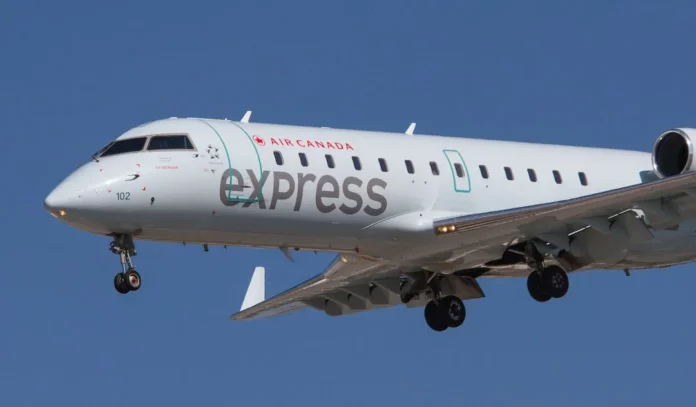Radio frequency interference (RFI) refers to the disturbance caused by unwanted electromagnetic signals that disrupt the smooth functioning of radio communications and navigation systems in aviation. These signals can originate from various sources, such as nearby electronic devices, power lines, lightning, or even intentional jamming. RFI poses a significant threat to the safety and efficiency of aviation operations, potentially leading to miscommunication, loss of situational awareness, and compromised navigation capabilities. It is essential for aviation professionals to understand the causes, effects, and mitigation strategies associated with radio frequency interference.
Contents
How Does Radio Frequency Interference Impact Aviation?
RFI can have grave consequences in aviation, affecting both communication and navigation systems. Communication is crucial for pilots and air traffic controllers to exchange essential information, including flight instructions, weather updates, and emergency notifications. When RFI occurs, it can disrupt these critical communications, leading to misinterpretations of instructions, delays in response time, and potential safety hazards. Additionally, RFI can impact navigation systems, jeopardizing accurate positioning and the ability to maintain an appropriate course during flight.
To better understand the impact of RFI, let’s focus on two vital aspects in aviation: communication and navigation.
Communication
Clear and efficient communication is vital to ensure safe air travel. In aviation, radio communication systems, such as Very High Frequency (VHF) radios and Air Traffic Control (ATC) transponders, facilitate effective communication between pilots, air traffic controllers, and ground personnel. RFI can disrupt these systems, hindering the exchange of crucial information and potentially leading to misunderstandings or missed instructions.
One common cause of RFI from communication systems is co-site interference. Co-site interference occurs when multiple communication systems share the same physical location or antenna. The close proximity of these systems increases the likelihood of electromagnetic interference, resulting in disruptions or garbled transmissions. Inadequate shielding, improper grounding, or faulty equipment can also contribute to RFI in communication systems.
During flight, pilots rely on communication with air traffic controllers to receive instructions, route changes, and updates on weather conditions or potential hazards. If RFI disrupts these communications, pilots may struggle to understand critical information or fail to receive important updates, compromising flight safety. Timely communication is crucial, especially during emergency situations, where quick decision-making and coordination can save lives.
Accurate navigation is fundamental for safe and efficient air travel. RFI can adversely affect navigation systems, leading to potential misalignment, inaccurate positioning, and compromised navigation aids, such as Instrument Landing Systems (ILS) and Global Navigation Satellite Systems (GNSS).
GNSS, including the widely used Global Positioning System (GPS), provides precise positioning and navigation capabilities for aircraft. However, when exposed to RFI, GNSS receivers can experience signal distortions or even total loss of satellite signal lock. This can result in incorrect position information displayed on the aircraft’s navigation display, leading to potential navigation errors or deviations from the intended flight path. The consequences can be particularly dangerous during low visibility conditions or when flying in congested airspace.
Similarly, ILS, which aids pilots in landing by providing vertical and horizontal guidance signals, can be susceptible to RFI. Interference affecting the accuracy of ILS signals can compromise the ability to perform a safe approach and landing, especially during critical phases of flight, such as during low-visibility conditions or at airports without alternative navigation aids.
How is Radio Frequency Interference Mitigated in Aviation?
To mitigate the effects of radio frequency interference in aviation, various measures are implemented across all levels of the industry, from equipment design to operational procedures. These measures aim to minimize the occurrence of RFI and ensure the resilience of communication and navigation systems.
Equipment Design and Standards
Avionic equipment, including radios, transponders, and navigation receivers, undergo rigorous testing to meet stringent electromagnetic compatibility (EMC) standards. These standards ensure that the equipment is designed and built to withstand electromagnetic interference and operate within specific tolerances. Compliance with EMC standards helps to minimize the susceptibility of aviation systems to RFI.
Aircraft manufacturers and avionics suppliers employ various techniques to enhance the resistance of equipment to RFI. These techniques include effective shielding and grounding, filtering of incoming signals, and proper isolation of sensitive components. By employing these measures, the impact of RFI on critical aviation systems can be significantly reduced.
Pilot training programs also emphasize the identification of potential RFI sources and the implementation of appropriate countermeasures. Pilots are trained to recognize and troubleshoot electronic interference events, along with the necessary steps to mitigate disruption and maintain safe operations.
Operational Procedures and Monitoring
Aviation authorities and operators establish operational procedures to minimize the effects of RFI on communication and navigation systems. These procedures include frequency management techniques, such as frequency diversity and frequency agility, which aim to avoid or overcome interference by dynamically changing frequencies or utilizing multiple frequencies simultaneously.
Additionally, rigorous monitoring and maintenance programs are implemented to detect potential RFI sources and ensure the integrity of communication and navigation systems. Regular inspections, calibration checks, and system performance evaluations help identify and rectify any RFI-related issues promptly.
It is crucial for pilots and aviation personnel to immediately report any incidents of RFI to the relevant authorities. By promptly reporting RFI occurrences, appropriate investigations can be conducted, and necessary measures can be implemented to prevent future interference.
Conclusion
Radio frequency interference (RFI) poses a significant threat to aviation communication and navigation systems. RFI can disrupt critical communications between pilots and air traffic controllers, potentially leading to misinterpretations of instructions and delayed responses. Additionally, RFI can compromise navigation aids, such as GPS and ILS, jeopardizing the accuracy of aircraft positioning and navigation.
Through stringent equipment design standards, robust operational procedures, and continuous monitoring, the aviation industry strives to mitigate the effects of RFI. Adherence to electromagnetic compatibility standards, effective equipment shielding and grounding, and frequency management techniques play essential roles in reducing the susceptibility of aviation systems to RFI. Additionally, pilot training programs and prompt reporting of RFI incidents contribute to maintaining safe and efficient aviation operations.
By understanding the causes, effects, and mitigation strategies associated with radio frequency interference, the aviation industry can continue to ensure the safety and reliability of communication and navigation systems, ultimately enhancing the overall safety of air travel.
For More: What is EGNOS in Aviation? (European Geostationary Navigation Overlay Service)




